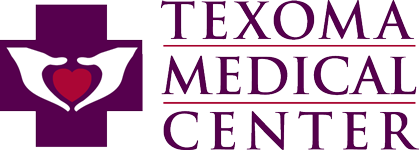Preventing Accidents at Home
Prevention is the best approach to safety. The National Safety Council states that four million serious accidents happen in the home each year. Below are some safety tips to keep you and those living in your home safe.
Fall and Other Injury Prevention Checklist
- Wear well-fitting shoes with non-skid soles.
- Use a cane or walker if you need to.
- Have good lighting and use night lights in hallways, bathrooms and stairways.
- Have grab bars installed in bathrooms and handrails on stairs.
- Keep stairways and passageways free of clutter.
- Remove throw rugs.
- Wipe up spills promptly.
- Have your vision and hearing checked regularly and wear your glasses or hearing aid if you need them.
- Don’t wear loose or long clothing that can cause tripping when standing on a ladder or step stool.
- Let your doctor know right away if you are dizzy, weak or unsteady.
- Avoid rushing to the bathroom. If you feel you need to rush, try going at frequent, scheduled times or consider using a bedside commode.
- When you rise from bed or from a chair, take your time. Make sure the position change has not caused dizziness before you start walking.
- Store hazardous materials (including bleaches and cleaning products) in a safe place and away from food.
- Don’t use pesticides or other poisonous substances in areas where food is prepared.
- Let the toaster cool and unplug it before reaching into it with a fork or other utensil.
Bathroom Safety Checklist
- Make sure that electrical appliances (such as hairdryers, radios, shavers, heaters, etc.) are not placed where they can fall into the bathtub or come in contact with water.
- Install grab bars on the side of the bathtub.
- Use a skid-resistant bath mat by the tub or shower.
- Have a special container for used razor blades and other sharp objects. Don’t toss them into the wastebasket.
- Don’t store medications in the bathroom. Instead, keep them in a closet or another dry cool place that can be locked.
- Leave a night light on in the bathroom and in dark hallways.
Poison Prevention Checklist
- Label all poisons.
- Keep all substances in their original containers.
- Store cleaning agents away from food and medications.
- Poison Control Phone Number – 1-800-222-1222
Hazardous Waste Disposal
- Place all needles and syringes, or other sharp objects, in a hard plastic or metal container with a screw top or re-enforced top with heavy-duty type tape.
- Place soiled bandages, disposable pads/sheets and medical gloves, masks and gowns in securely fastened plastic bags before placing them in the garbage can with other trash.
Oxygen Safety/Medical Gases
- Use Oxygen in an area free from smoking materials such as cigarettes or cigars; open flames such as gas stoves, candles, a fireplace, and electrical medical equipment with frayed cords. Make sure the oxygen tank is kept away from heat sources that could cause a rise in pressure with a risk of bursting.
- Post a “NO SMOKING” sign and/or an “OXYGEN IN USE” sign if you have family member or visitors who smoke.
- Remind visitors not to smoke.
- Remove flammable liquids such as oil, grease, nail polish remover, and alcohol from the room where the oxygen tank is kept. Do not use petroleum-based products near oxygen flow, i.e., Vaseline on lips/nose.
- Remove electrical equipment such as hairdryers and electrical razors from the room as these items may generate sparks which can lead to a fire.
- Store medical gas cylinders on their sides in a stable protected area (protected from heat extremes).
- Wool and synthetic blankets or clothing may cause static electricity and sparks. Use cotton blankets and clothing.
- Keep a working smoke detector in the room.
- Keep a working fire extinguisher in the room.
